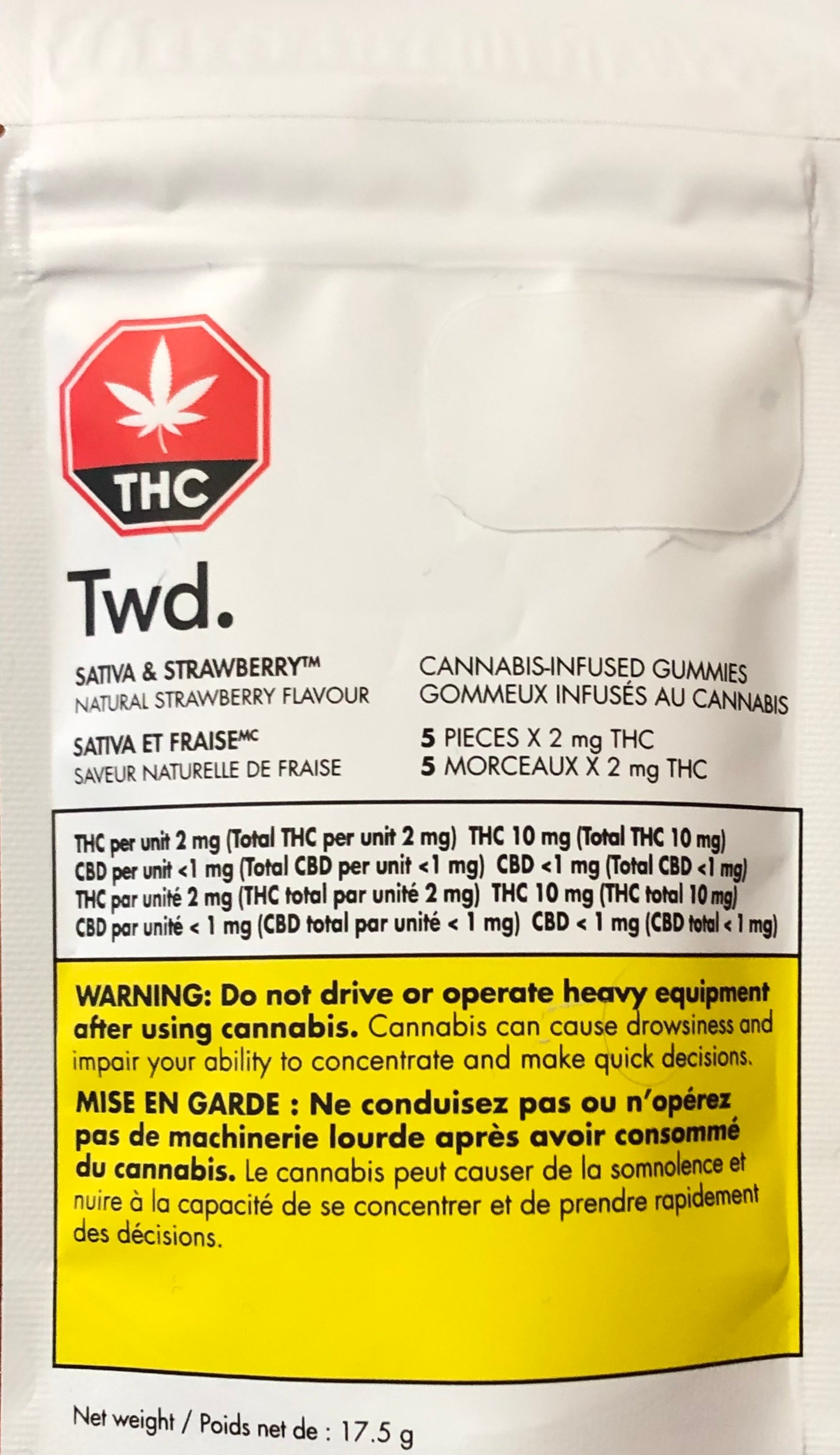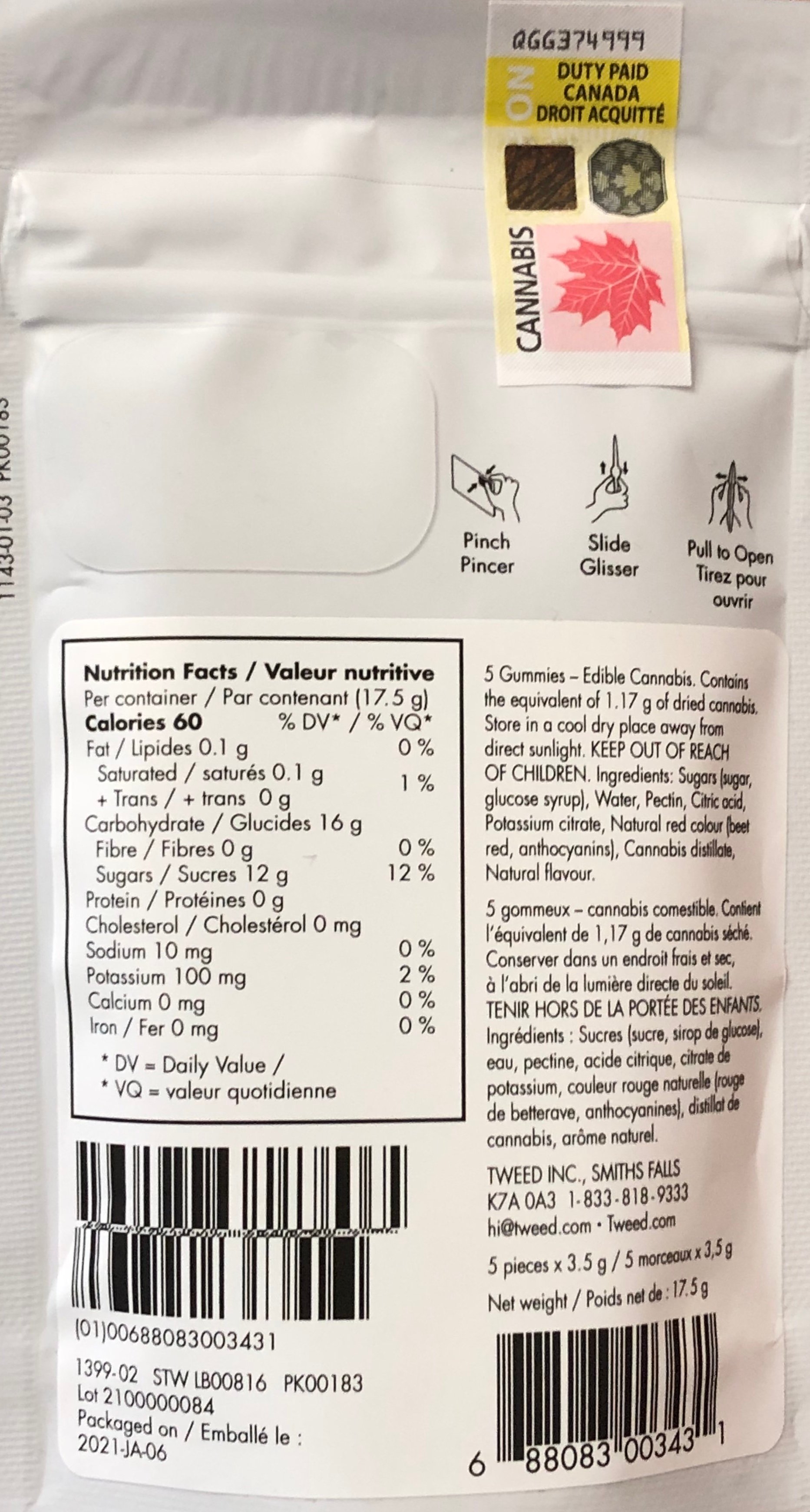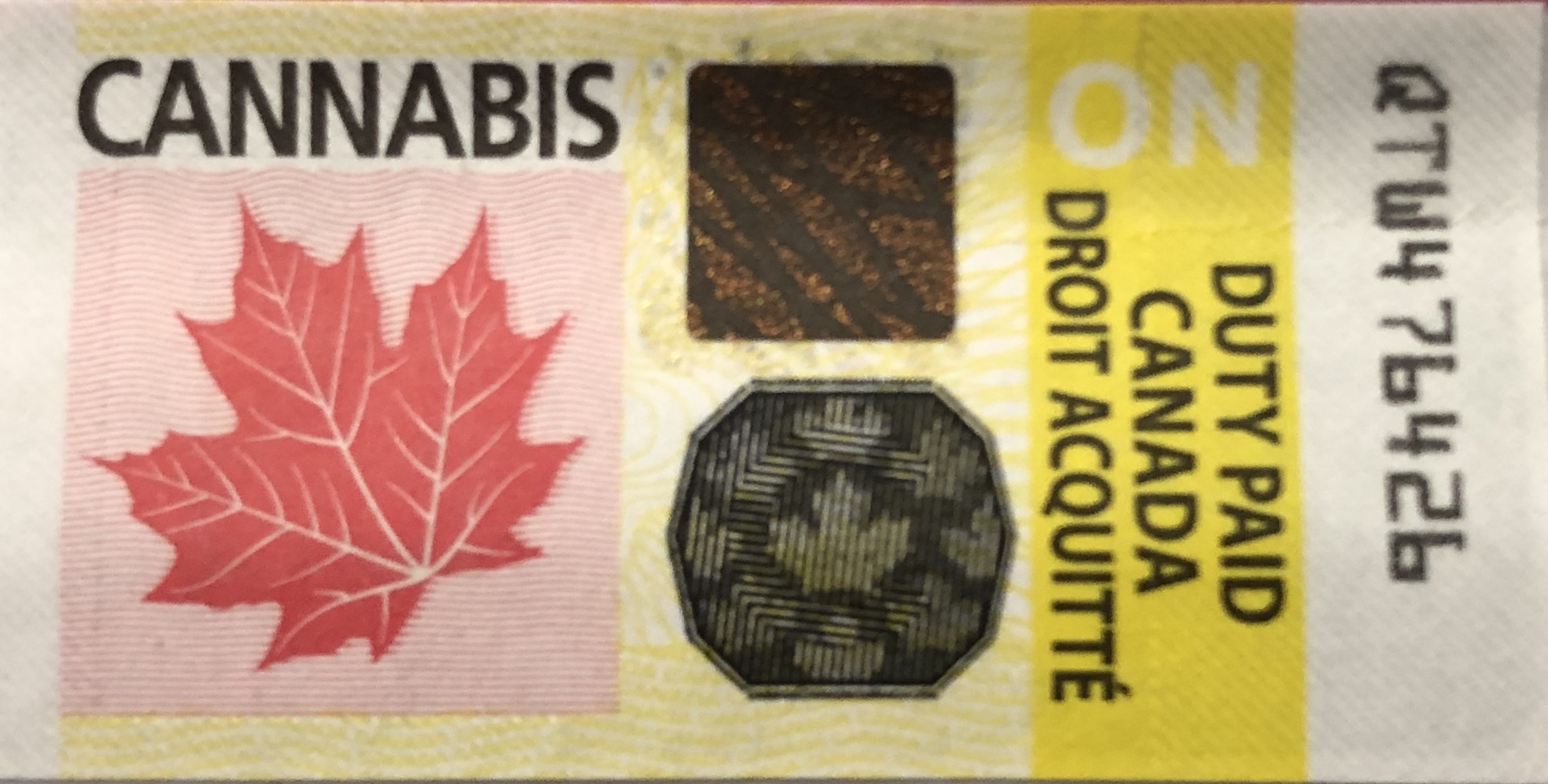Cannabis and Kids

The Poison Centre is seeing an increase in cases of children unintentionally eating edible cannabis products and requiring hospital admission. In many cases these products were unregulated, looked almost identical to popular brands of candy, and contained many more milligrams of THC than approved by Health Canada. While cannabis use is legal in Canada, there are many products available on the market that are unregulated, meaning that they do not come from an authorized provincial or territorial retailer. The effects of cannabis in a child are much more variable than effects seen in adults. Any ingestion of cannabis in a child can cause serious harm. Learn more about cannabis and how to keep your family safe.
What is Cannabis?
- Cannabis (also known as marijuana, weed and pot) refers to a group of plants that are grown around the world, including Canada. The Cannabis plant contains many chemical substances, including over 100 “cannabinoids”.
What’s a cannabinoid?
- Cannabinoids affect cells in the brain and the body. They can change how those cells behave and communicate with each other.
What are examples of cannabinoids?
- THC (delta-9-tetrahydrocannabinol) is a cannabinoid you may hear about the most. It is the “psychoactive” component, meaning that it is responsible for the way your brain and body respond to cannabis, including the “high” or intoxicating effect.
- CBD (cannabidiol) is also a cannabinoid. It does not produce a “high” or intoxication, and is most often used for medicinal purposes.
What is cannabis used for?
- Recreation
People often use cannabis to experience feelings of relaxation and contentment. - Medicine
Cannabis has been used for a variety of indications including appetite stimulation in illness, anti-seizure therapy, and pain relief.
How is cannabis consumed?
- Cannabis can be consumed through smoking or vapourizing the plant-based product, or the active compounds can be extracted into edible forms and eaten.
- Edible cannabis products can include candies, baked goods, and oils. They are available both commercially and homemade.
How does cannabis affect a child?
- Symptoms can vary from none at all to a coma. Some children have required a breathing tube and have needed to be closely monitored in an intensive care setting.
Other symptoms can include:
- Vomiting
- Agitation
- Confusion
- Slurred speech
- Unsteadiness on feet
- Drowsiness/lethargy
- Muscle weakness
- Slowed breathing
- Coma
- Seizures (rare)
Why is cannabis more dangerous for children than for adults?
There are a few possible reasons why cannabis is more dangerous for children than for adults:
- Most exposures in children are by ingestion. The way that the body absorbs THC in an ingestion is variable and unpredictable.
- Since children are smaller, the amount of THC per kilogram of body weight is much larger than the same amount would be in an adult.
- The drug behaves differently and performs different actions in a child’s body vs. an adult’s.
Which cannabis products are we most concerned about?
- Cannabis edibles bought outside of the legal supply chain.
- Homemade cannabis edibles: dose control is very difficult without sophisticated equipment.
- All cannabis products that are not stored properly.
What are some differences between legal and illegal cannabis products?
 |
| View OPC's Cannabis Infographic (pdf) |
How can I recognize regulated cannabis?
- Cannabis products sold by licensed sellers have an “excise stamp” at the time of the sale. If a packaged cannabis product does not have an excise stamp when you buy it, it is not a legal product. Find your provincial excise stamp here: https://www.canada.ca/en/health-canada/services/drugs-medication/cannabis/laws-regulations/provinces-territories.html
- Remember that legal edible cannabis products are limited to a maximum of 10mg THC per package. If you buy an edible cannabis product that is labelled with an amount more than 10mg THC per package, then it means that the product is unregulated and has not been tested.



What can I do to prevent an unintentional cannabis poisoning?
- Store all cannabis products in a locked box or container, and separate from regular food and drinks. Ensure these products are labeled. Remember: #HighAndLocked!
- Be extra careful with edible cannabis, which can be mistaken for regular food, drink and candy.
- Always buy your cannabis products from an authorized provincial and territorial seller.
 Thinking about using cannabis while parenting? Learn more:
Thinking about using cannabis while parenting? Learn more:
Health Canada - Cannabis while parenting (pdf) ![]()
Health Canada Infographic: © All rights reserved. Thinking about using cannabis while parenting. Health Canada, modified 2018. Adapted and utilized with permission from the Minister of Health, 2021. (Source)
